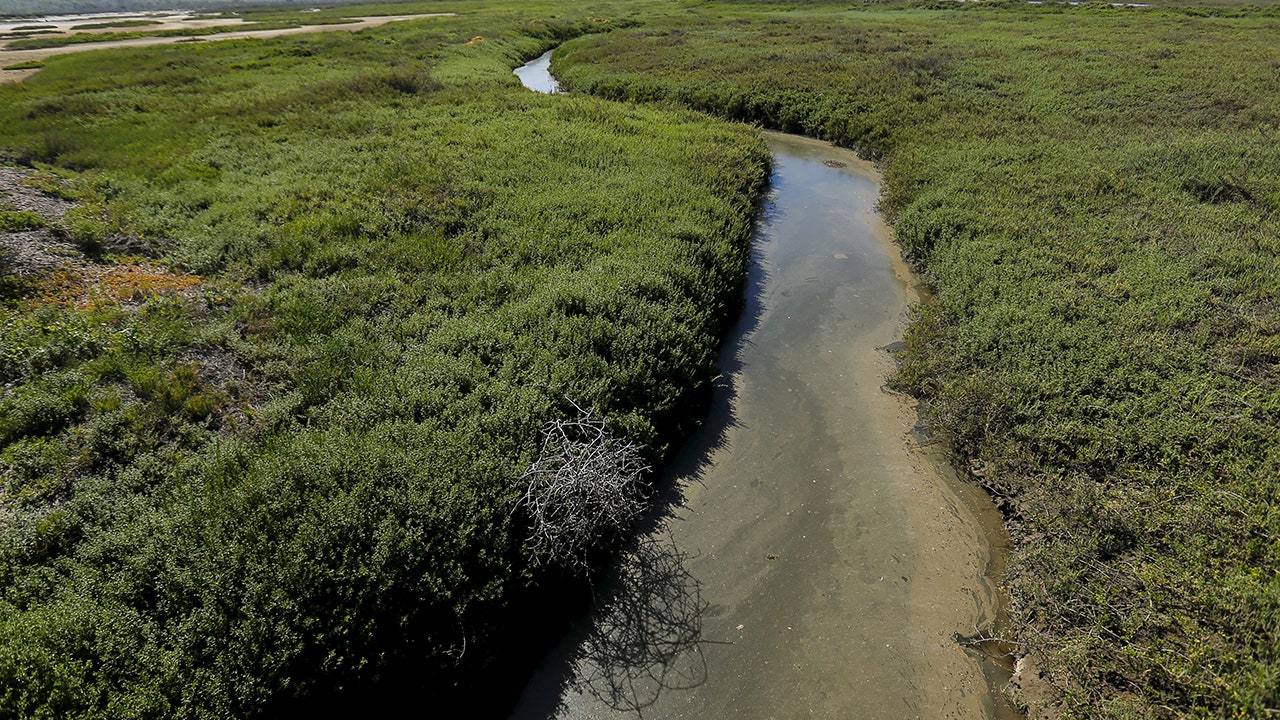Mexico's Border Crisis: Poisoning Southern California?
Editor’s Note: Concerns about the impact of Mexico's border crisis on Southern California have reached a critical point. This article explores the multifaceted challenges and potential consequences.
Why This Matters
Mexico's ongoing border crisis is not just a humanitarian issue; it's increasingly impacting the environment and public health of Southern California. The influx of migrants, coupled with inadequate sanitation and waste management in border regions, raises serious concerns about potential cross-border contamination of water supplies, increased spread of infectious diseases, and environmental degradation. Understanding the scope of this crisis is crucial for implementing effective solutions and mitigating the risks to Southern California communities. This article examines the key aspects of this complex issue, including water contamination, disease transmission, and the strain on resources.
Key Takeaways
| Issue | Impact on Southern California |
|---|---|
| Water Contamination | Potential contamination of shared water resources, impacting drinking water quality. |
| Disease Transmission | Increased risk of infectious diseases spreading across the border. |
| Resource Strain | Increased demand on healthcare, sanitation, and social services. |
| Environmental Impact | Degradation of border ecosystems due to increased waste and pollution. |
Mexico's Border Crisis: A Southern California Perspective
The escalating humanitarian crisis at Mexico's southern border is creating a ripple effect with significant implications for Southern California. The sheer volume of migrants crossing into Mexico, many lacking access to basic sanitation, poses a direct threat to the shared environment and public health infrastructure along the border region. This isn't simply a matter of compassion; it's a matter of public safety and environmental protection.
Key Aspects of the Crisis
- Water Scarcity and Contamination: Overcrowding in border towns strains already scarce water resources, potentially leading to contaminated water sources used by both migrants and nearby Southern California communities.
- Waste Management Challenges: Inadequate waste disposal contributes to pollution of soil and water, creating further environmental hazards that can easily cross the border.
- Disease Outbreaks: The close proximity and often unsanitary conditions increase the risk of outbreaks of infectious diseases, which can easily spread across the border and affect Southern California populations.
- Strain on Resources: The increased demand for healthcare, social services, and emergency response puts a significant strain on Southern California's resources.
Detailed Analysis: Water Contamination
Shared aquifers and river systems connect Southern California to Mexico's border regions. Poor sanitation practices in migrant camps and border towns can easily contaminate these shared resources, potentially affecting drinking water quality in Southern California. This risk is exacerbated by the lack of robust cross-border environmental monitoring and collaboration. The potential consequences range from waterborne illnesses to long-term health issues due to exposure to contaminated water.
Interactive Elements
Water Contamination Risks: A Closer Look
Introduction: Understanding the pathways of water contamination is key to mitigating the risks.
Facets:
- Sources of Contamination: Sewage, agricultural runoff, and industrial waste from overcrowded border towns.
- Transmission Pathways: Shared aquifers, river systems, and irrigation channels.
- Mitigation Strategies: Improved sanitation in migrant camps, increased cross-border water quality monitoring, and collaborative water management initiatives.
- Impacts: Waterborne diseases, economic losses from water treatment and healthcare costs.
Disease Transmission: A Public Health Threat
Introduction: The high density of migrants in border areas significantly increases the risk of disease outbreaks.
Further Analysis: Specific diseases like typhoid fever, cholera, and influenza pose a considerable threat. The lack of access to healthcare and vaccination further compounds this risk. Enhanced surveillance, vaccination programs, and improved sanitation are critical for mitigating these public health risks.
Closing: Effective cross-border collaboration is paramount to prevent the spread of infectious diseases and protect the health of both populations.
People Also Ask (NLP-Friendly Answers)
Q1: What is Mexico's border crisis?
A: It's a complex humanitarian situation involving a large influx of migrants at Mexico's southern border, creating numerous challenges including overcrowding, inadequate sanitation, and environmental risks.
Q2: Why is this important to Southern California?
A: The crisis poses direct threats to Southern California's environment and public health through potential water contamination, disease transmission, and strain on resources.
Q3: How can this crisis affect me?
A: You could be affected by potential water contamination impacting drinking water quality, increased risk of infectious diseases, and strain on local healthcare systems.
Q4: What are the main challenges?
A: Inadequate sanitation, resource scarcity, lack of cross-border collaboration, and the potential for widespread disease outbreaks.
Q5: How can I help?
A: Support organizations providing aid to migrants, advocate for improved cross-border collaboration, and stay informed about the situation.
Practical Tips for Protecting Southern California
Introduction: Here are actionable steps to mitigate the risks associated with Mexico's border crisis.
Tips:
- Stay informed about water quality advisories issued by local authorities.
- Practice good hygiene to minimize the risk of infectious diseases.
- Support organizations working to improve sanitation and healthcare in border regions.
- Advocate for increased cross-border cooperation on environmental and public health issues.
- Contact your elected officials to express concerns and support solutions.
Summary: Proactive measures can significantly reduce the impact of this crisis on Southern California.
Transition: Understanding the challenges is the first step towards creating a safer and healthier future.
Summary (Resumen)
Mexico's border crisis poses significant environmental and public health risks to Southern California. Water contamination, disease transmission, and strain on resources necessitate immediate and collaborative action to mitigate these risks.
Closing Message (Mensaje Final)
The interconnectedness of our communities demands a unified approach to addressing the challenges posed by this crisis. What steps can we take collectively to ensure the well-being of our shared environment and populations?
Call to Action (CTA)
Learn more about how you can get involved and support organizations working to address this critical issue. Share this article to raise awareness and encourage action.

